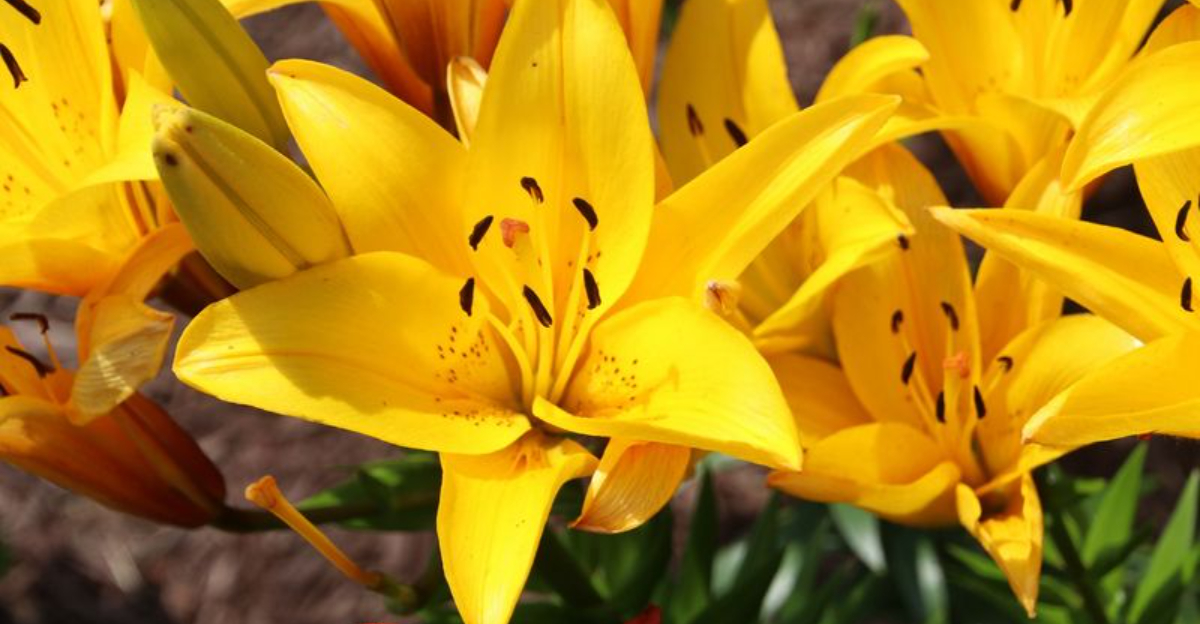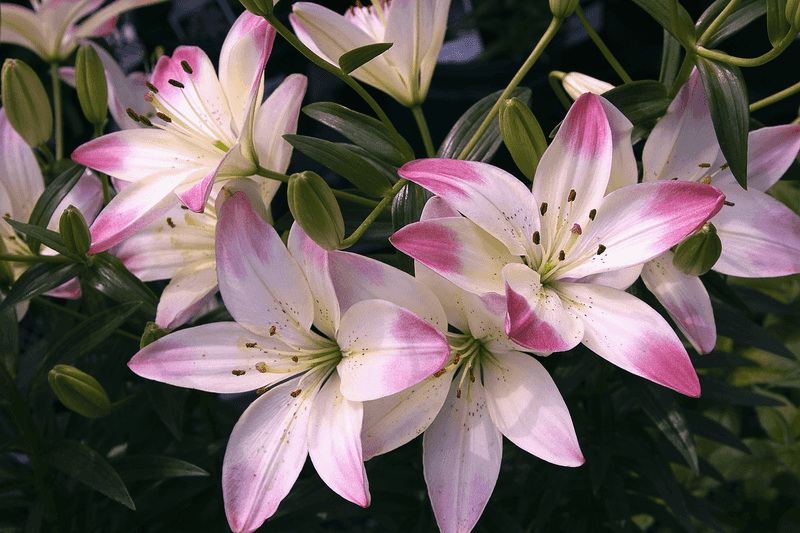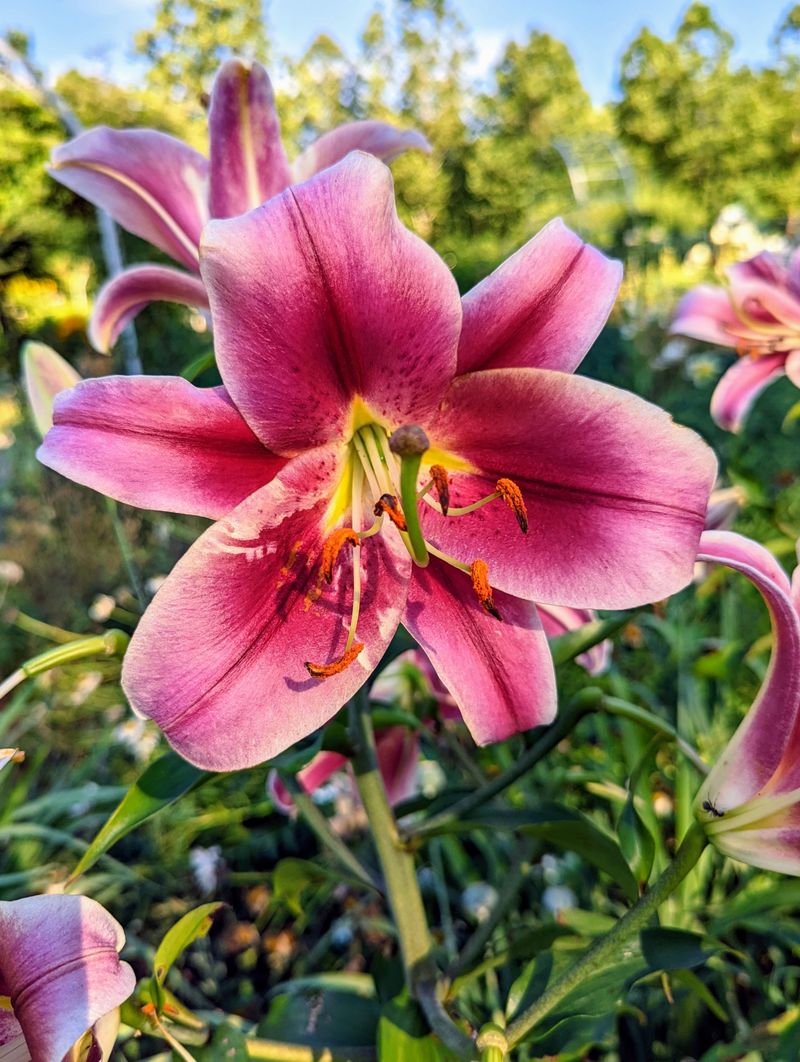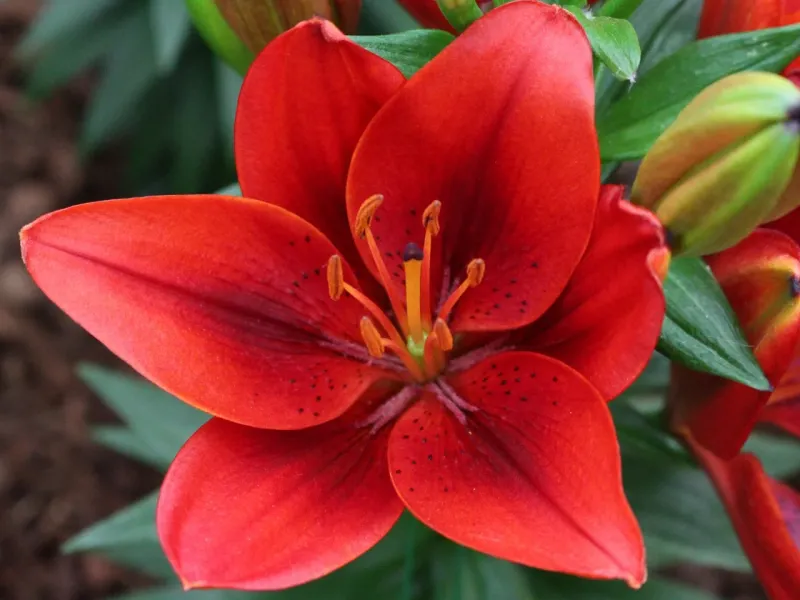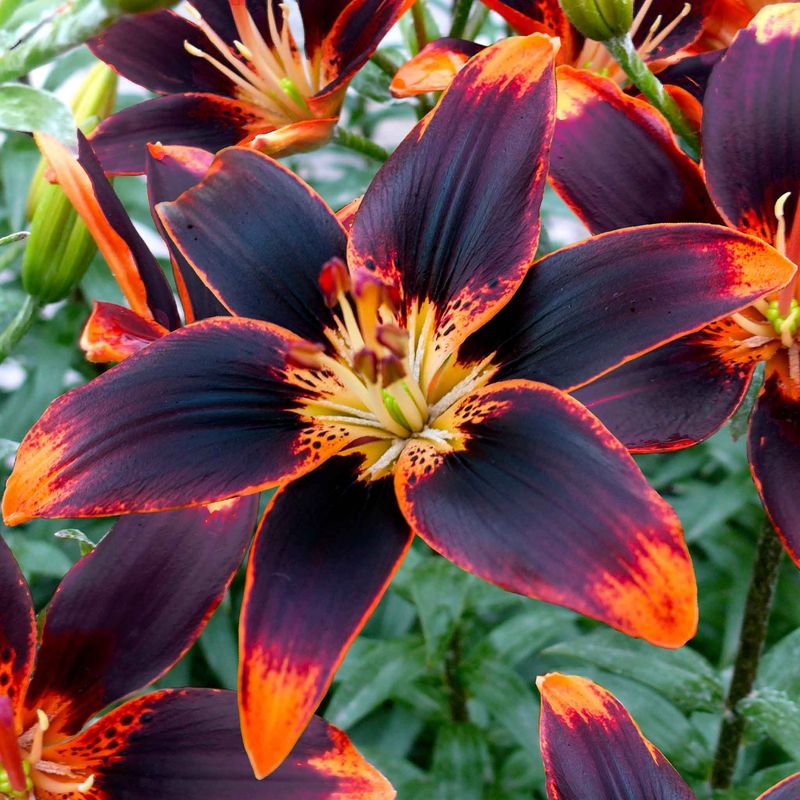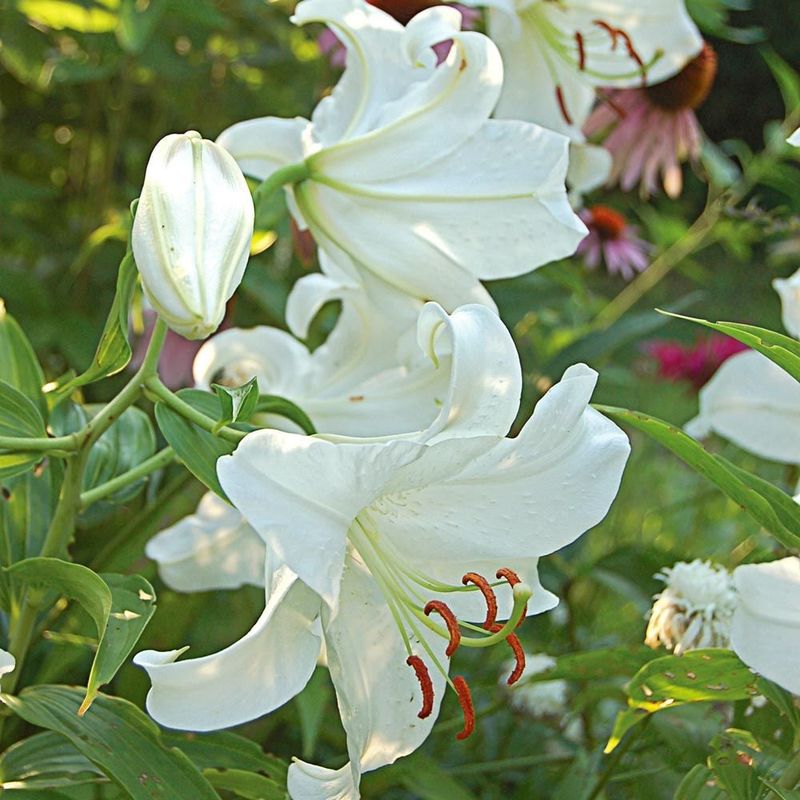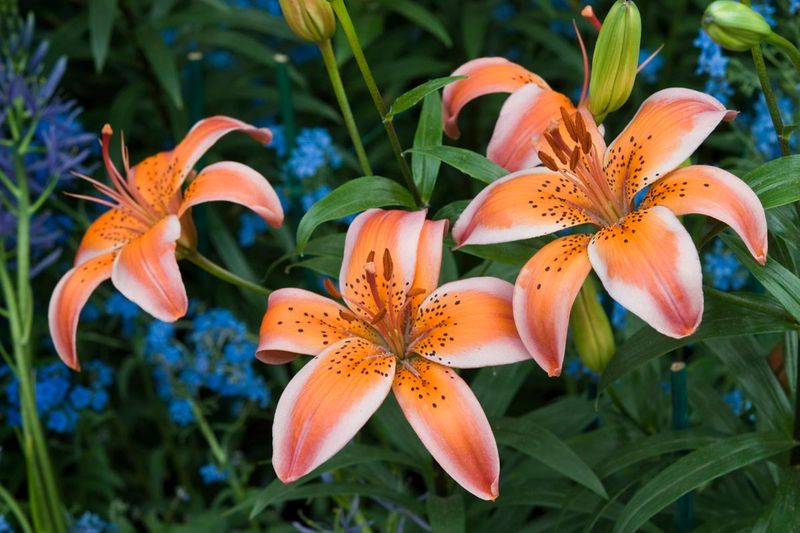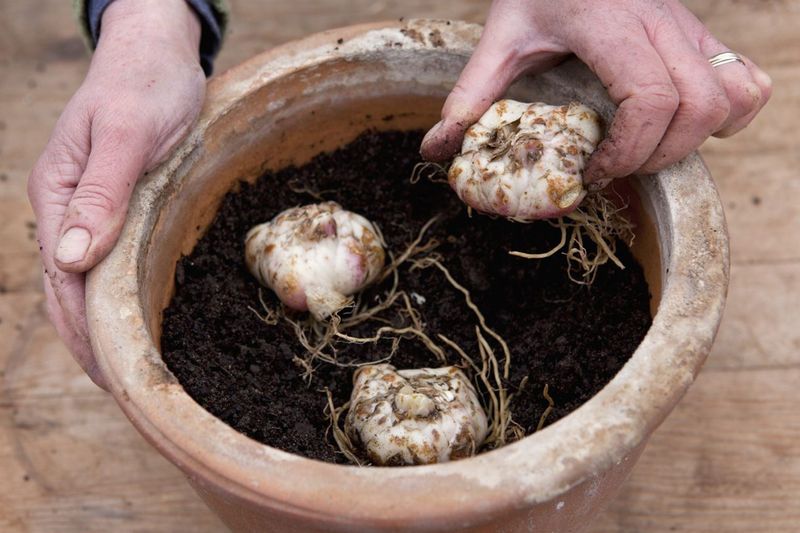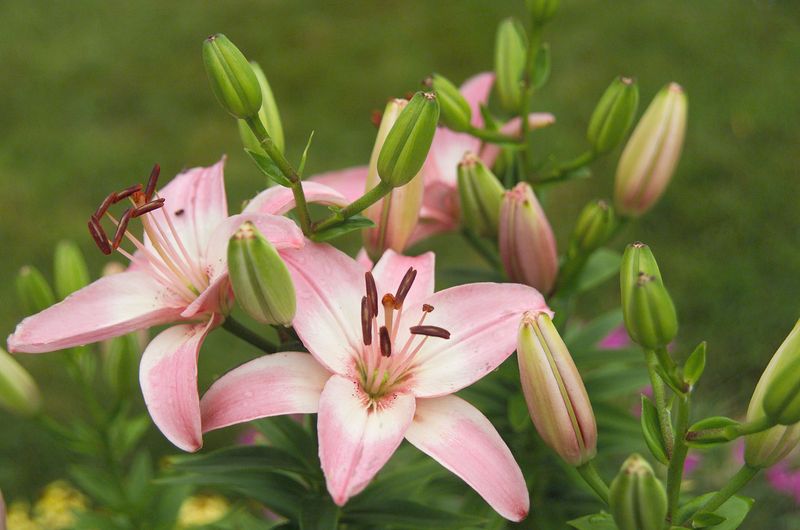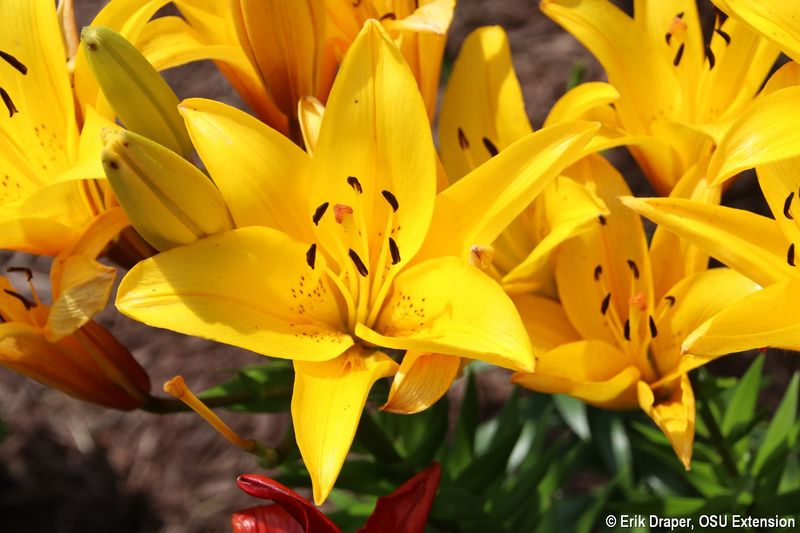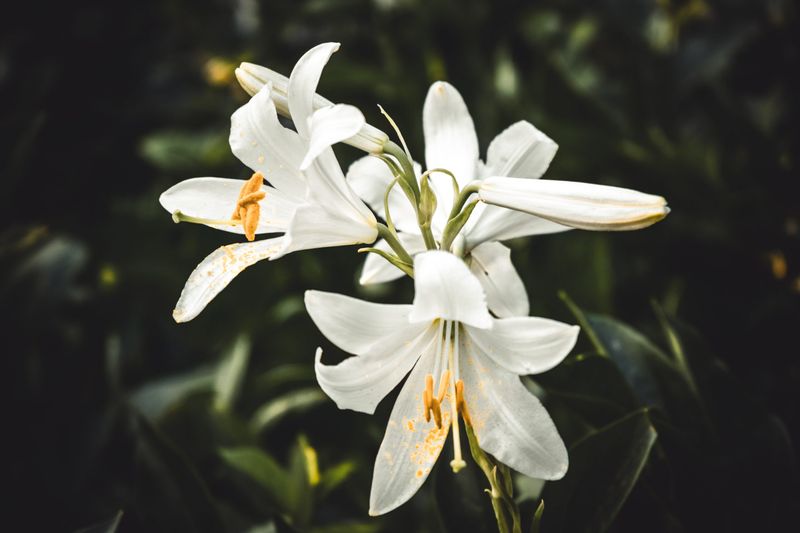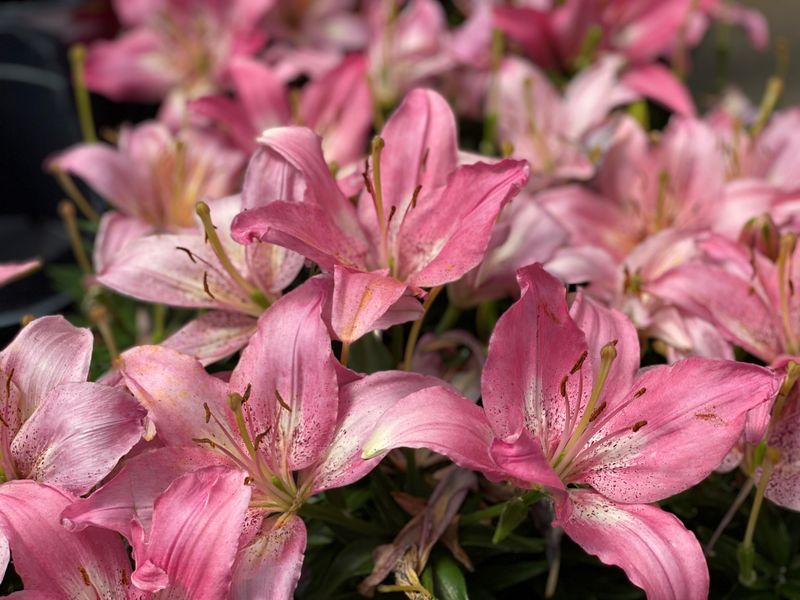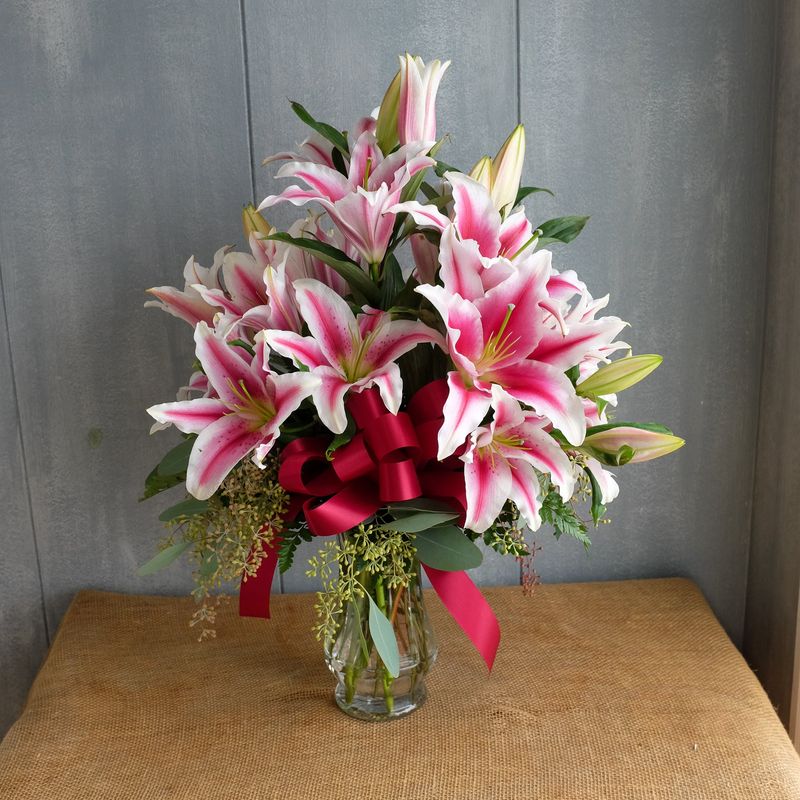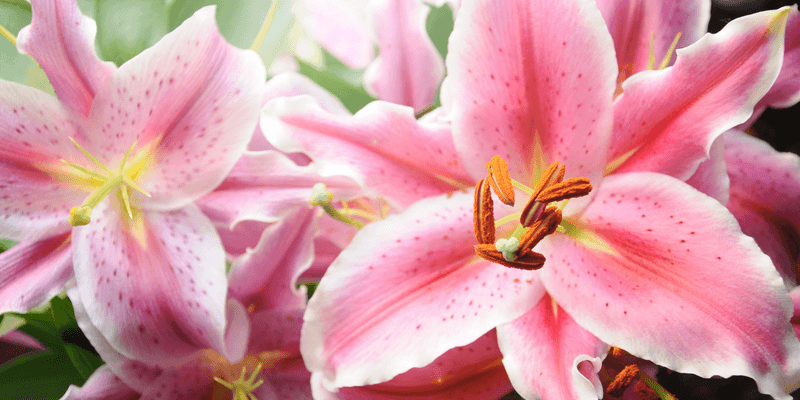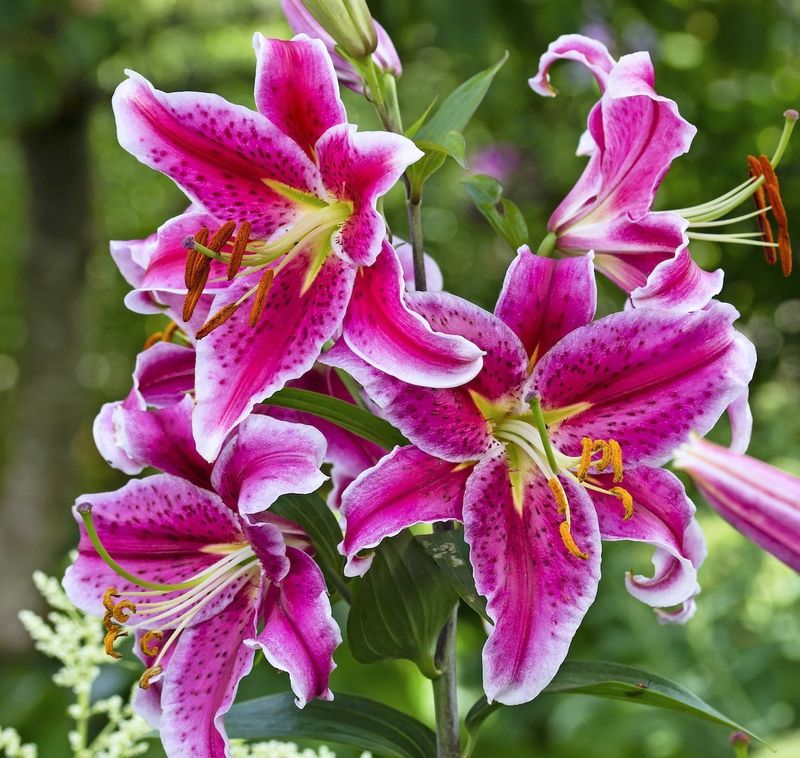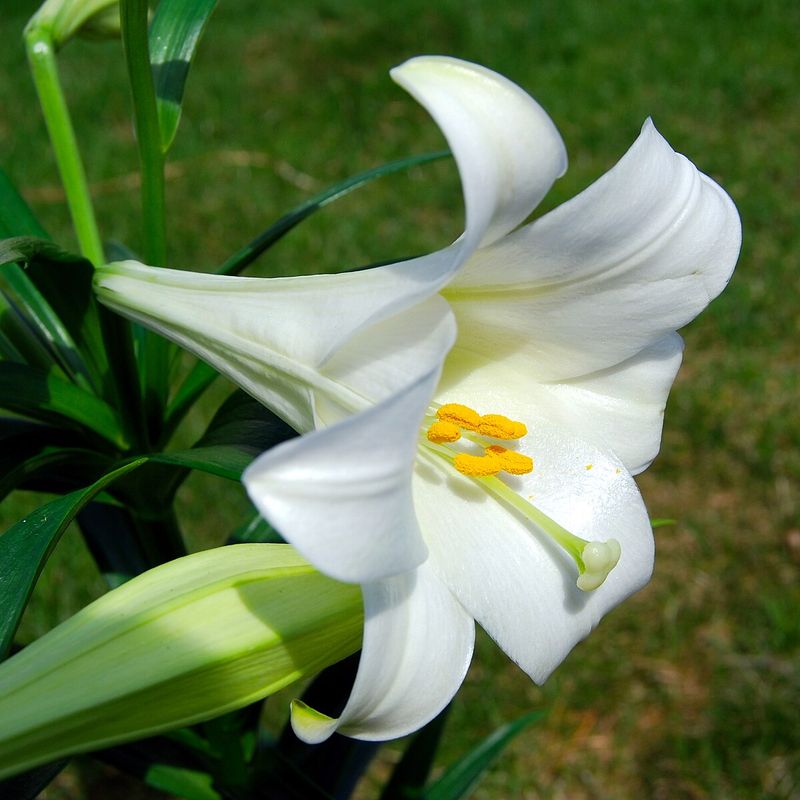Lilies are not just beautiful flowers; they hold fascinating secrets and intriguing trivia. With their enchanting colors and intoxicating scents, these flowers have a rich history and diverse symbolic meanings across cultures.
Whether you’re an avid gardener or a curious cat owner, explore these 15 captivating facts about lilies that reveal their dual nature as both garden delights and potential feline foes.
This comprehensive list will guide you through their ancient roots, medicinal uses, and unique characteristics that set them apart in the botanical world.
1. Lilies Symbolize Different Meanings
Lilies, with their vivid hues, convey a spectrum of meanings. White lilies epitomize purity and virtue, often gracing weddings and funerals. Orange lilies, in contrast, exude passion and energy, making them a bold choice for lively settings.
Meanwhile, pink lilies express admiration and gratitude, offering a softer, more romantic gesture. These symbolic meanings make lilies versatile in conveying emotions. Whether celebrating new beginnings or offering condolences, the right lily color can speak volumes.
Choose wisely when gifting lilies, as they carry significant emotional weight. Their vibrant petals not only beautify spaces but also communicate heartfelt sentiments.
2. They’re One of the Oldest Cultivated Flowers
Lilies boast a cultivation history stretching back over 3,000 years, intertwining with ancient art and mythology. Revered by various civilizations, they appear in Egyptian tombs and Greek frescoes, symbolizing beauty and renewal.
This long-standing presence highlights their timeless appeal and enduring elegance. Ancient gardeners valued these flowers for their striking blooms and symbolic power, a tradition still cherished today.
Their deep-rooted history connects us to past cultures, reminding us of shared human experiences. As a testament to their beauty, lilies continue to grace gardens worldwide, bridging time and culture. Their legacy endures, captivating hearts across ages.
3. Not All ‘Lilies’ Are True Lilies
Despite their names, not all flowers termed ‘lilies’ belong to the Lilium genus. True lilies are distinct, characterized by their bulbous roots and unique petal arrangements. Flowers like daylilies and calla lilies, though similar in appearance, belong to entirely different families.
This distinction is crucial for gardeners and plant enthusiasts aiming to cultivate true lilies. Understanding these differences ensures proper care and cultivation, as each type has specific needs.
By recognizing true lilies, you appreciate their unique botanical traits and avoid confusion. Embrace the diversity within the lily family, appreciating each flower’s unique beauty and requirements.
4. Lilies Are Toxic to Cats
Lilies, while beautiful, pose a significant threat to cats. Even minimal exposure to lily pollen or petals can lead to severe kidney failure in felines. This toxic nature makes it imperative for cat owners to keep lilies out of their homes and gardens.
Awareness and precaution can prevent tragic accidents. Pet-friendly households should opt for non-toxic floral alternatives. If exposure occurs, immediate veterinary attention is crucial.
Understanding the risks associated with lilies ensures the safety of beloved pets. This dual nature of lilies, as both stunning and hazardous, underscores the importance of informed plant choices for pet owners.
5. They Can Grow Over 8 Feet Tall
Some lily varieties, like the Giant Himalayan Lily, can soar to impressive heights, exceeding eight feet. These towering plants create a dramatic focal point in gardens, showcasing nature’s grandeur.
Such height not only adds vertical interest but also provides a lush backdrop for shorter plants. Gardeners aspiring to grow these giants must ensure ample space and support. Their towering presence demands careful planning and placement.
When successfully cultivated, these lilies reward with breathtaking blooms and an awe-inspiring garden display. Their impressive stature transforms ordinary spaces into extraordinary landscapes, celebrating nature’s ability to surprise and delight with its wonders.
6. Lilies Have Been Used in Medicine
Throughout history, lilies have found their place in traditional medicine. Ancient healers utilized extracts from lily bulbs and flowers to treat ailments such as wounds, burns, and inflammation. Their healing properties were revered, contributing to herbal medicine practices.
Modern herbalists continue to explore lilies’ potential benefits, inspired by historical uses. While not a cure-all, their soothing qualities offer natural remedies for minor ailments.
This medicinal role enriches lilies’ value, blending beauty with utility. Understanding their historical application offers insight into herbal traditions and encourages exploration of natural healing. Lilies remain a symbol of nature’s generosity in both beauty and health.
7. Each Lily Bulb Produces Multiple Flowers
A single lily bulb has the potential to produce several blooms, creating a stunning spectacle of color in gardens. This prolific nature makes lilies a cherished choice among gardeners seeking vibrant displays.
Each bloom contributes to a lush, colorful arrangement, enhancing outdoor spaces with minimal effort. Proper planting and care maximize this flowering potential, rewarding with repeated floral displays.
Additionally, this attribute underscores lilies’ value in garden design, providing extensive visual impact. By understanding their growing habits, gardeners can plan for continuous bursts of color. Lilies’ ability to multiply flowers from one bulb exemplifies nature’s generosity and beauty.
8. Lilies Can Be Found on Every Continent Except Antarctica
Lilies exhibit remarkable adaptability, flourishing on every continent except Antarctica. Their ability to thrive in diverse climates—from tropical to temperate—highlights their resilience and versatility.
This global distribution makes them a universal symbol of beauty, transcending cultural boundaries. Gardeners worldwide cherish lilies for their vibrant blooms and adaptability to various environments.
Their presence in gardens from Asia to America underscores their universal appeal. Whether in lush gardens or wild landscapes, lilies bring color and elegance. This widespread growth ensures that lilies continue to captivate across continents, adapting to local conditions while offering timeless beauty.
Their global presence enriches botanical diversity.
9. They Have a Strong, Sweet Fragrance
Lilies, especially varieties like Stargazer, are renowned for their intoxicating fragrance. This strong, sweet scent attracts pollinators like bees and butterflies, enhancing garden biodiversity.
Their aroma adds another sensory dimension, making gardens more inviting and enjoyable. However, this powerful fragrance can be overwhelming indoors, so placement matters.
For fragrance lovers, planting lilies near windows or garden paths maximizes their aromatic appeal. Understanding the intensity of lily scents helps in planning garden layouts for optimal enjoyment.
Beyond visual beauty, their fragrance enriches the sensory experience. Lilies’ aromatic allure transforms gardens into fragrant sanctuaries, inviting nature’s wonders to thrive together.
10. Lilies Are Popular Wedding Flowers
White Casablanca lilies are a favored choice for weddings, symbolizing purity and grace. Their elegant blooms add a touch of sophistication to bridal bouquets and floral arrangements.
These lilies’ classic beauty complements any wedding theme, from traditional to modern. Their lush petals create a sense of opulence without overshadowing other floral elements.
Brides often choose Casablanca lilies for their timeless appeal and subtle fragrance. Careful selection and arrangement enhance their impact, contributing to memorable wedding decor.
Whether in bouquets or centerpieces, these lilies embody love and commitment. Their popularity in weddings underscores their universal symbol of purity and elegance.
11. Certain Lilies Bloom at Night
Distinct from many day-blooming counterparts, certain lilies like the Formosa Lily prefer the cover of night to open their blooms. This nocturnal behavior attracts specific pollinators like night-flying moths, adding a unique dynamic to garden ecosystems.
Evening gardens come alive with these night-bloomers, offering a different sensory experience. Gardeners can enjoy a tranquil, moonlit setting enhanced by these lilies’ beauty.
Planning a night garden with these blooms provides continuous floral interest from day to night. Their adaptability to the night emphasizes nature’s diversity and the intricate relationships between plants and pollinators.
Lilies at night offer a serene, magical garden ambiance.
12. Lilies Can Be Propagated from Scales
Lilies offer an intriguing method of propagation: from scales. By gently removing and planting scales from lily bulbs, new plants can be cultivated. This technique is accessible to gardeners, providing a cost-effective means to expand their lily collection.
Understanding the propagation process ensures successful multiplication, enhancing garden diversity. Experimenting with this method allows for personalized gardening experiences and innovation.
Proper care and patience yield rewarding results, as lilienthusiasts witness new growth. This propagation technique underscores the ingenuity within gardening, offering creative ways to enjoy and share lilies.
Through scale propagation, lilies symbolize renewal and the continuous cycle of growth.
13. They Were a Symbol of Greek and Roman Gods
In ancient mythology, lilies held sacred symbolism, associated with deities like Hera and Venus. Their presence in art and temples reflects divine beauty and purity. Greeks viewed lilies as symbols of goddess Hera’s milk, signifying rebirth and motherhood.
Similarly, Romans connected them to Venus, the embodiment of love and beauty. This mythological significance highlights the cultural importance of lilies in ancient times. Recognizing this history enriches our understanding of lilies beyond their physical allure.
They represent timeless beauty and divine connection. Ancient myths and legends continue to inspire, linking us to past civilizations and their reverence for nature’s gifts.
14. Tiger Lilies Are Edible
Known for their vivid orange blooms, Tiger lilies are not just visually appealing but also edible. In Asian cuisine, their petals and bulbs are utilized in soups and stir-fries, adding a unique flavor and texture.
This culinary use showcases the versatility of lilies beyond ornamental purposes. While edible, they should be consumed with caution and proper knowledge, as not all lilies share this trait.
Exploring edible flowers like Tiger lilies offers a delightful culinary adventure, blending aesthetics with gastronomy. Their inclusion in dishes enriches culinary traditions and celebrates nature’s bounty. Through these uses, lilies connect gardens with kitchen creativity.
15. Lilies Can Survive Harsh Winters
Many lily varieties demonstrate remarkable resilience, capable of withstanding harsh winter conditions. Their bulbs lie dormant beneath the snow, ready to sprout vibrant blooms come spring.
This winter-hardiness makes them a reliable choice for gardeners seeking perennial beauty. Proper mulching and care ensure their survival through cold months. Their ability to thrive despite harsh climates exemplifies nature’s resilience, promising consistent garden splendor.
As winter fades, lilies re-emerge, symbolizing renewal and hope. Their endurance through adverse conditions inspires gardeners to embrace seasonal changes. Lilies’ capacity to survive winter speaks to their tenacity, offering lasting beauty and garden continuity.
